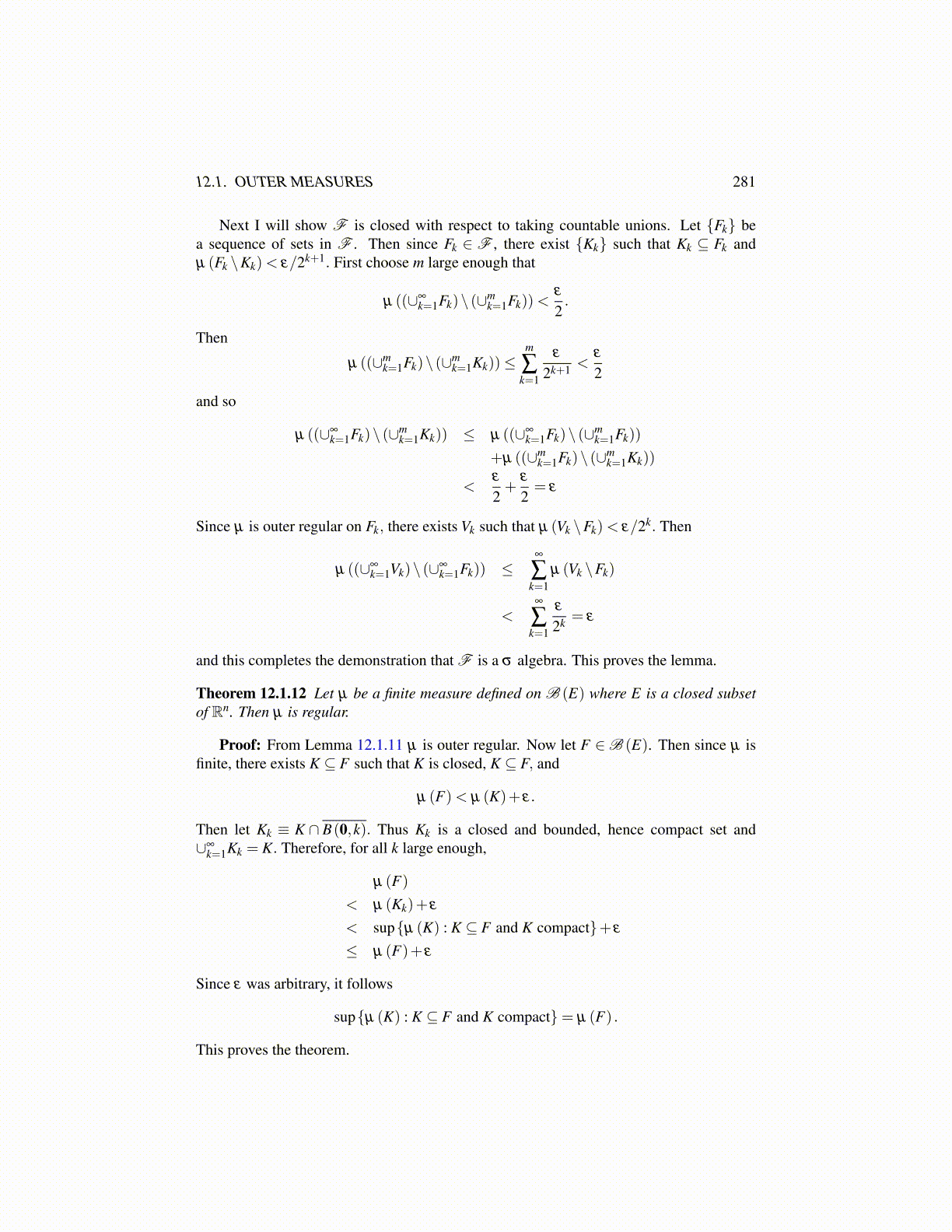
12.1. OUTER MEASURES 281
Next I will show F is closed with respect to taking countable unions. Let {Fk} bea sequence of sets in F . Then since Fk ∈ F , there exist {Kk} such that Kk ⊆ Fk andµ (Fk \Kk)< ε/2k+1. First choose m large enough that
µ ((∪∞k=1Fk)\ (∪m
k=1Fk))<ε
2.
Then
µ ((∪mk=1Fk)\ (∪m
k=1Kk))≤m
∑k=1
ε
2k+1 <ε
2
and so
µ ((∪∞k=1Fk)\ (∪m
k=1Kk)) ≤ µ ((∪∞k=1Fk)\ (∪m
k=1Fk))
+µ ((∪mk=1Fk)\ (∪m
k=1Kk))
<ε
2+
ε
2= ε
Since µ is outer regular on Fk, there exists Vk such that µ (Vk \Fk)< ε/2k. Then
µ ((∪∞k=1Vk)\ (∪∞
k=1Fk)) ≤∞
∑k=1
µ (Vk \Fk)
<∞
∑k=1
ε
2k = ε
and this completes the demonstration that F is a σ algebra. This proves the lemma.
Theorem 12.1.12 Let µ be a finite measure defined on B (E) where E is a closed subsetof Rn. Then µ is regular.
Proof: From Lemma 12.1.11 µ is outer regular. Now let F ∈B (E). Then since µ isfinite, there exists K ⊆ F such that K is closed, K ⊆ F, and
µ (F)< µ (K)+ ε.
Then let Kk ≡ K ∩ B(0,k). Thus Kk is a closed and bounded, hence compact set and∪∞
k=1Kk = K. Therefore, for all k large enough,
µ (F)
< µ (Kk)+ ε
< sup{µ (K) : K ⊆ F and K compact}+ ε
≤ µ (F)+ ε
Since ε was arbitrary, it follows
sup{µ (K) : K ⊆ F and K compact}= µ (F) .
This proves the theorem.